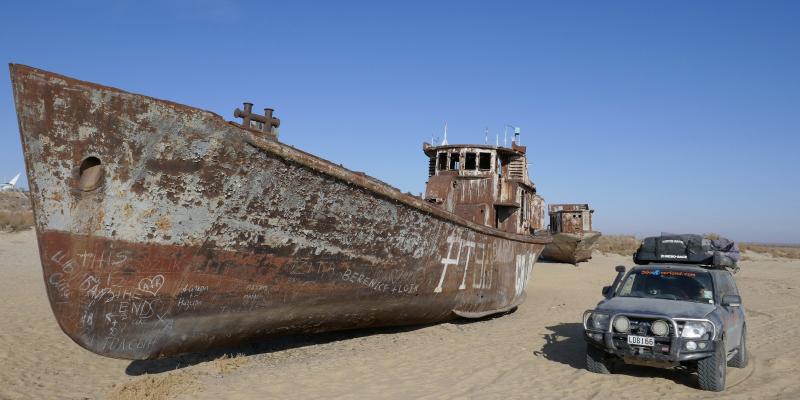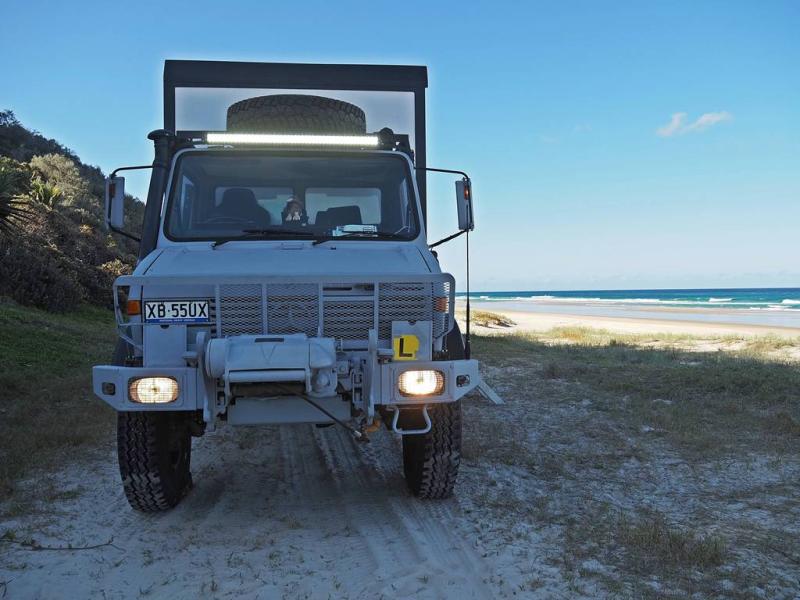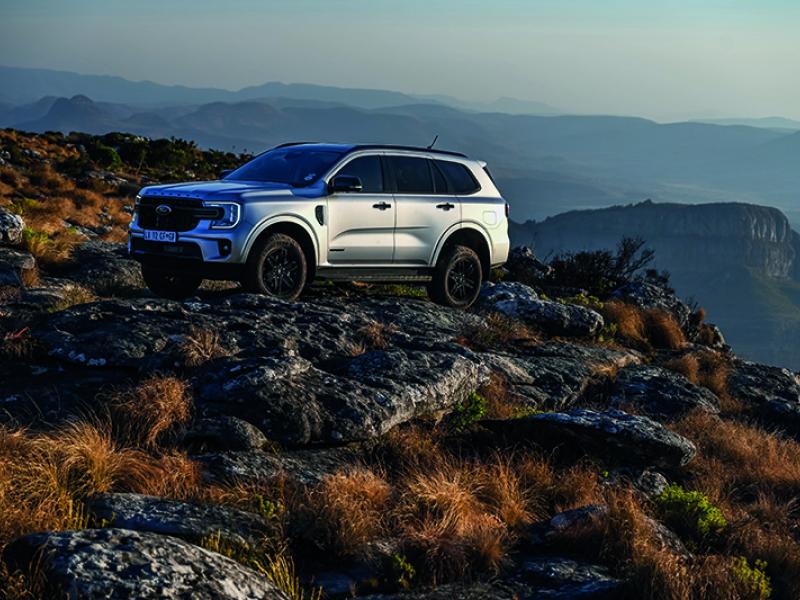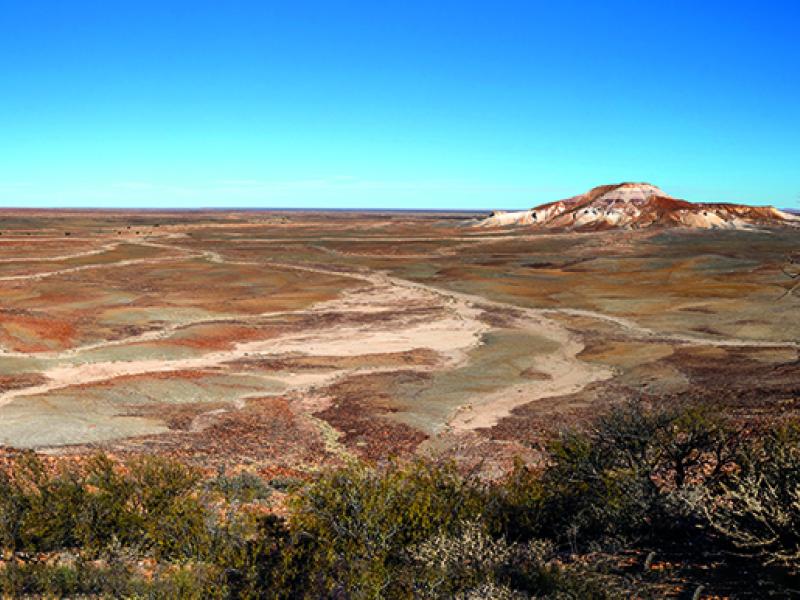As Overlander Aaron Rich and family near the end of their cross-world Odyssey they continue to be amazed and intrigued by the things they see and people they encounter along the way.
The Aral Sea first began mysteriously disappearing in the 1960s, a slow process that continued for decades. In 2014 NASA presented a satellite image that showed for the first time in modern history the eastern basin of the Aral Sea had completely dried up… it's now known as the Aralkum Desert.
Today, the slowly rusting hulks of ships embedded in the sands of a 'new' desert serve as a reminder of the significant fishing, fish canning and maritime industries that once thrived here. The Aral Sea once provided a sixth of the Soviet Union's fish catch and was ringed with prosperous towns – home to 40,000 workers. There was even a secret Soviet weapons testing facility built on an island (of which there were once 1,100) in the Aral Sea between 1948 and 1954. Initially this facility was protected by a natural coastline but as the Aral Sea disappeared, so too did the island. Eventually the disused biological weapons test site found itself in the 'new' desert, complete with containers leaking improperly stored anthrax... oh, the good old Soviet era!
Ships of the desert!
Standing at the old lighthouse and with a little imagination, I could mentally picture the once bustling sea port that existed at Muynak, on Uzbekistan’s side of the Aral Sea. Muynak still exists, but you could hardly consider it a port town today, given that the nearest remaining shores of the Aral Sea are now many miles away across the new desert.
Like the nearby Caspian Sea, the Aral Sea is/was essentially a very large salty lake, with no outflow into any other external body of water. As the sea gradually disappeared there was nowhere ship owners could relocate their ships to, to avoid the problem, hence why the new desert became the ship graveyard that it is today. It’s worth noting, I think, the subtle distinction between the ships you see presented here vs a 'shipwreck'. These weren't 'shipwrecks' in the normal sense – not at the time at least. The ships were seaworthy… but they needed a sea… it's a moot point now I suppose, as now they are certainly wrecked ships. Of course, the disappearance of the sea caused the local fishing industry to become unsustainable long before these ships finally came to rest their hulls on the sand.
How did this happen?
The disappearance of the Aral Sea is considered one of the world's worst man-made environmental disasters. Soviet engineers of the 1960's desired to establish large scale agriculture projects, mainly water intensive cotton (Uzbekistan) and wheat (Kazakhstan). To accomplish this, two significant rivers that flow from the (very) high altitude Pamir Mountains, across the desert to the Aral Sea, were diverted into massive, inefficient and 'leaky' irrigation schemes.
It doesn't help that glaciers in the high Pamirs (one in Tajikistan and another in Kyrgyzstan) have also been receding due to climate change and today produce 25 percent less water volume than they did in 1960s.
From Uzbekistan
back into Kazakhstan
This part of Uzbekistan (and Kazakhstan) is barren and arid. Just miles of desert all the way to the horizon. At least it's easy to find somewhere to make camp – pretty much anywhere you can leave the atrocious road and head overland for a bit of privacy will do for a quick overnight stop.
Our exit from Uzbekistan went far smoother and quicker than our entry had been. But there were nonetheless a couple of things about this border crossing that I think are worth mentioning here. Firstly, the road through the desert on the Uzbekistan side was thoroughly atrocious for many long, slow miles. There's nothing really unusual about that, as we're accustomed to being completely off-road, or on bad roads, more often than not.
Suffice to say, the road was so bad it was actually more comfortable driving on the dusty dirt tracks running alongside the road. These tracks might be bumpy, but at least they don't have the horrendously jarring and car swallowing pot holes that you get with broken tarmac.
Also, at one point a man flagged us down and we stopped. He ran over with a couple of empty 1.25 litre bottles, hoping to take some petrol from us. He didn't speak English, though he understood when we indicated the Pajero runs on diesel. Whilst there is traffic along this route heading to/from the border with Kazakhstan, I couldn't help but wonder why he would venture out here running so low on fuel?! Perhaps he didn't have much choice.
I particularly want to mention an unusual conversation I had with one Uzbek border guard, while simultaneously trying to keep a close eye on another, who was examining the contents of my phone while making himself comfortable in the Pajero; I was required to unlock my phone for him! Searching the contents of devices was once a common occurrence at border checkpoints in Uzbekistan, but I didn't think they did this any longer – or at least not to foreigners.
Lucky us
The English speaking guard with whom I was having a discussion seemed rather puzzled indeed – he wanted to know what my employer thought of my travelling in this way and how I could do this. I explained that we had been travelling this way for many months and that I don't presently have an employer.
He didn't seem entirely satisfied with my response, but continued on with his next question anyway.
What about my country's government - did they know where I was, and how was I going to avoid getting into trouble with them? It really struck me just what a difficult time this fellow was having in comprehending our ability to travel freely.
Uzbekistan is still ultimately a police state. Although it is supposedly slowly liberalising, I note that the Government recently released its updated list of all that Uzbek people are banned from doing, watching, reading etc… and that list is said to be longer than ever.
I attempted to explain to the curious border guard that my government really didn't have any particular interest in where I was, which it seemed he had some difficulty accepting.
Access blocked
This reminds me of another issue worthy of mention, which is that I was unable to establish a VPN connection to the internet whilst in Uzbekistan. (Very briefly for those unfamiliar, a VPN gives a private tunnel like connection to the internet, whereby no one can watch what you do online, including would-be hackers, and/or certain authoritarian governments). After quite some trying to connect to my VPN provider, I eventually realised my access was being deliberately blocked from within Uzbekistan.
Kazakhstan... again
As the only foreigners present at the Uzbekistan/Kazakhstan border, and perhaps benefiting from the kids presence too, Kazakh border guards brought us directly to the front of every queue, causing some uncomfortable friction I might add. Some border crossings are far more confusing than others, and this was one of those. There is often limited to zero signage directing you where to go. And even where multilingual signage is present, none of the displayed languages include English! In this part of the world we are still very much the minority.
Once across the Kazakh border checkpoint we were pleased to find ourselves on new, excellent quality roads; a far cry from the roads that had brought us to the Uzbek side of the border. Kazakhstan's extensive road building programme has evidently already attended to the country's southwest. We drove across this part of Kazakhstan quite quickly, though pausing for several days in the Kazakh town of Uralsk, where we sought permission from the Russian Embassy to re-enter Russia for a third time.
Rocket town
Once across the Russian border we had a further 1,300 kilometres to Moscow, where we planned to have a few days break. These were slower roads, with many big trucks to painfully overtake, but there were some sights of interest along the way too.
We spent our first night whilst headed up Russia in the city of Samara, which we discovered had been of importance to the Soviet space programme, particularly in the area of building rockets.
When I pick this up again in the next article, I will do so from Moscow… and as you’ll see, we had a wee disaster to deal with. There can be no guarantees that all will run smoothly on a journey such as this!






